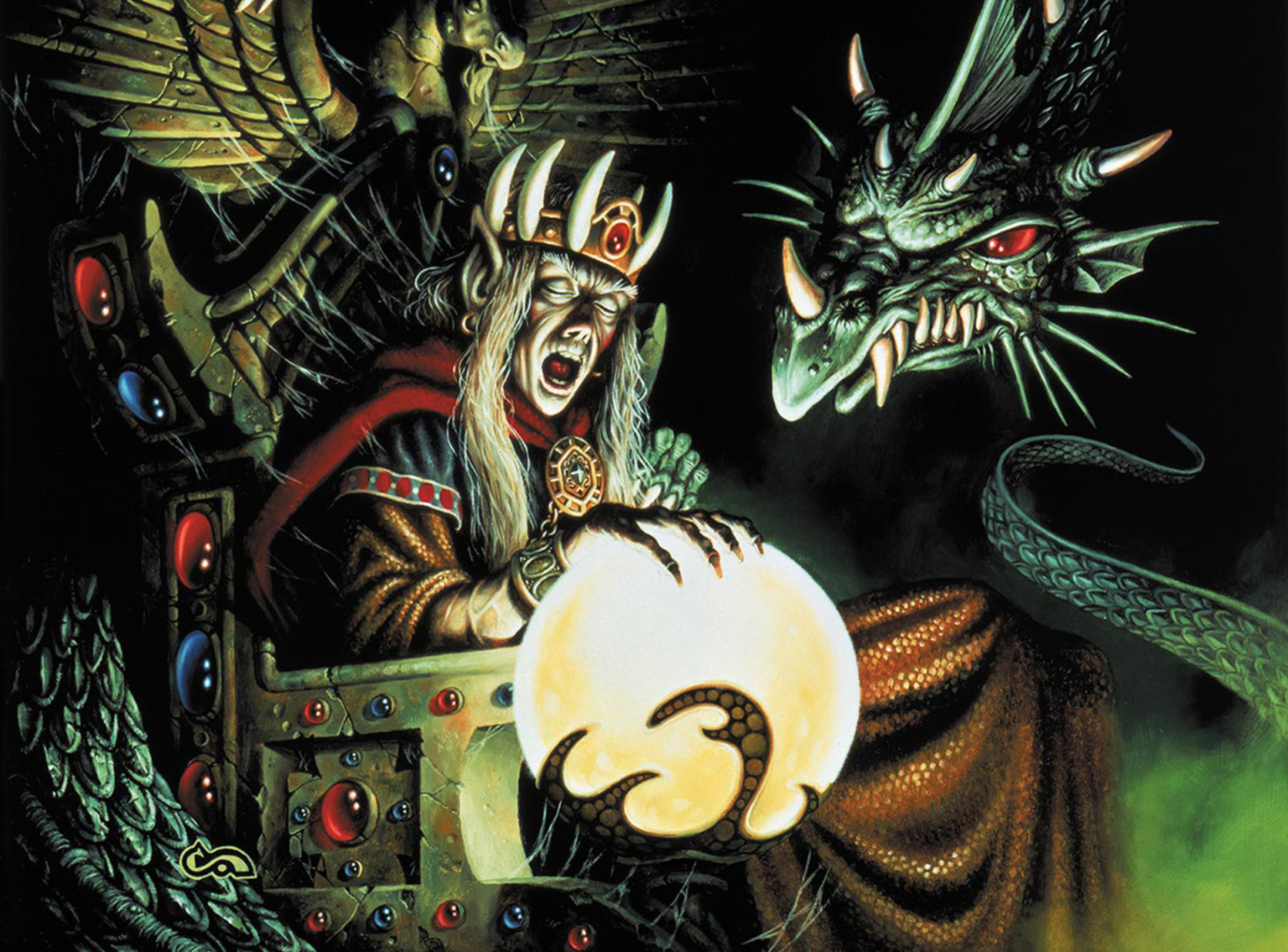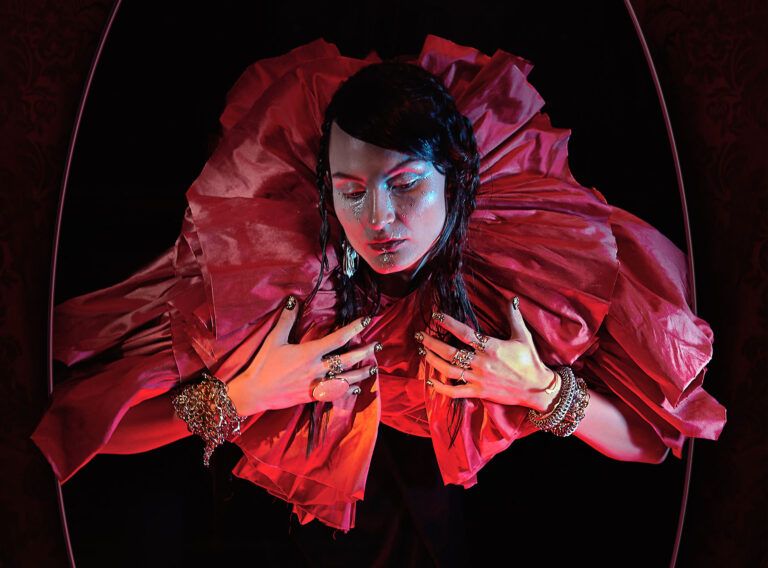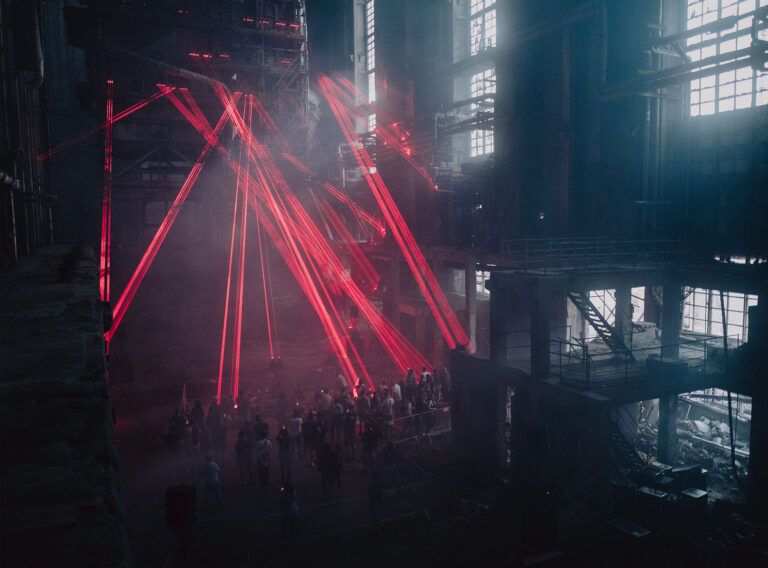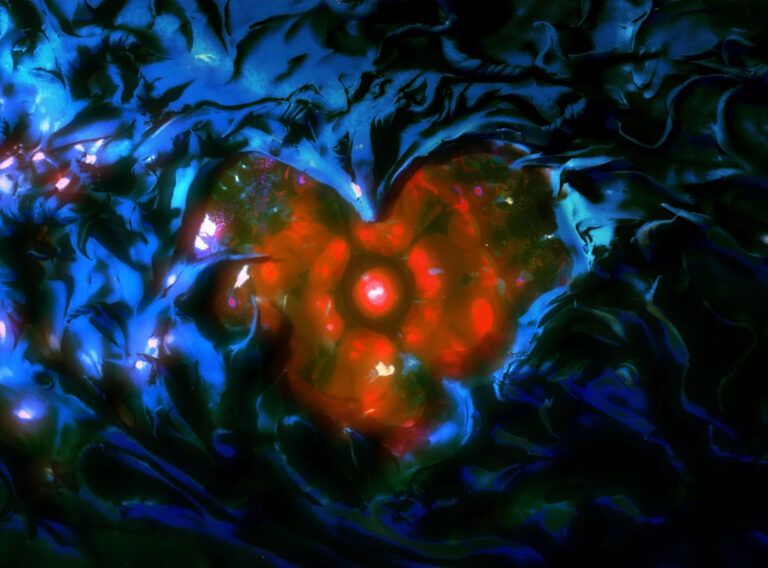The soundscape of Dungeon Synth invites us into many an adventure: the wide musical and contemporary influences span folk music, black metal, dark wave and early RPG soundtracks, among others, all despite harkening back to an era long gone. Percussions are often sparse and dramatic – the emphasis lies on a sublime, gothic atmosphere conveyed by foreboding sounds and “medieval” timbres such as bells, choirs, flutes and cymbals, often accompanied by harmonic drone pad sounds.
Some dub the late-90s “prison era” of Burzum as the genre’s defining sonic signature. The author, Varg Vikernes is a neo-nazi pagan Norwegian who served 15 years in prison for church arson and the murder of his Mayhem bandmate Euronymous. He does not explicitly express his political views in the music, but admits its association with paganism, which he claims “is to a large degree about spirituality and atmosphere, feelings and longing, so any music that can work as a catalyst for this fits well” (1). Despite the problematic associations, this characterization is widely applicable to the genre’s sound. He goes on to characterize his project “maybe as monotonous, mostly uncomplicated and also melancholic”(2).
The recurrent patterns in Burzum’s prison albums are slow tempos, little volume dynamics and repetitive, kitschy melodies in minor keys. This reflects the scarcity of resources when creating music in prison, but the compositional minimalism is what gives the albums that particular late 90s lo-fi sonic aesthetic, and what has informed the genre ever since. The music becomes meditative and invokes a cushion of constructed nostalgia for the dark ages, the projection of an angsty man in prison longing for open, vast spaces. The “prison-era Burzum” has since spawned hundreds of releases dubbed “Dungeon Synth” and can be easily found on streaming services and platforms such as Bandcamp.
In what is perhaps an ironic twist, the focus on the dark ages then takes us into the realm of games set in medieval fantasy worlds. Early-2000s video games inspired by the technological boom (unlike Vikernes who fetishized an ethnic fantasy land) took the Tolkien-esque appeal to the younger generation. The genre’s much-needed excursion into less monotone and ruminative soundscapes is manifested in the soundtrack of RuneScape or Diablo. The common denominator is the Middle Ages setting, but this time we emerge from the catacombs: the music (pragmatically, perhaps, given the gaming industry context) ranges across many different moods, depending on the situations encountered and locations visited.
The lo-fi grittiness of the genre (be it limited access to technology or early computer sound chip architectures) evokes a second layer of nostalgia through timbres, as today’s standards on high fidelity and production in game sound design stand in intense contrast to the early forays in the field. The instrumentation and textures are quite similar to that of Burzum, but given the fact the game studios had a budget to hire professionals for their product to sell, the compositions and affect produced vary greatly as opposed to the monolithic melancholy of early “Catacomb Synth”. There still is the signature of MIDI programming in the volume dynamics, but in terms of musicality, the RuneScape and Diablo soundtracks have actualized the genre in the early 2000s by blending different genres (ranging from blues and pop to waltz and sea shanties) and compositional approaches in their soundtracks, along with employing catchy melodies, loops and generally shorter compositions, which keeps the listening experience fresher and at times more light-hearted.
The early fantasy games typically based in “canonical” fantasy timespaces are the ancestors to a whole genre of best-selling game titles, such as The Witcher series based around the novels by Polish author Andrzej Sapkowski, or the Czech video game Kingdom Come: Deliverance. Listening to the soundtracks, we clearly move into more contemporary territory which often utilizes ornate orchestral instrumentations that despite the clear influence of Dungeon Synth shift the genre into a hi-fi, cinematic landscape that borders on the neo-classical. The oldschool experimental aesthetic is suppressed, and the auditory representation of this medieval world paints it in vivid detail, crossing the line of cinematic neo-medieval soundtracks as employed in blockbuster shows like Game of Thrones, Vikings, or film scores by John Williams.
There arises a clear paradox in framing this music within Dungeon Synth, given the fact that synthesizers seem to play a relatively minor role in it, and the sonic palette is quite different – so why include them? Original Dungeon Synth longed to invoke this nostalgia for a pre-industrial society, and there seems to be a correlation in video games and their soundtracks set in this timespace. After all, aren’t they an escape to a fantasy world where we may believe things were perhaps simpler and more noble? In this they share some intentionality with the genre’s foundations, but in a repurposed manner. Where Burzum was a revolt against the modern world and materialism, video game soundtracks are very much in favor of these values as they are packaged and sold to a new generation keen to escape the hypermodern world – through technology.
Staying within the frame of gaming, the massively popular contemporary phenomenon of board games has stimulated new developments in the music that accompanies this playful neo-medieval allure. Entire playlists dubbed “Medieval Board Game Background Music” pop up on streaming services and YouTube, shifting away from the aesthetic of foreboding melancholy and towards a merrier affect. What remains the same however is an emphasis on ambiance and atmosphere, transporting the listener into a similar constructed nostalgia of an adventurous time. With the absence of sensory overload of video games however, a board game evening can certainly benefit from being accompanied by such a soundscape for a deeper immersive experience – if you’re into board games, give it a try!
The Swiss-based sound designer and composer Michael Ghelfi has a whole YouTube channel dedicated to fantasy ambience. Depending on where you are in your board game or DnD session, you will find an upload that provides the right soundscape – be it searching the forest, finding quests in a pub or battling a boss in a dungeon. Here we move quite far from original Dungeon Synth, as these soundscapes are more akin to a flexible tool for immersing oneself in fantasy-oriented activities than a sovereign musical genre. It seems to be the logical conclusion of the traced music history for the age of streaming services, a time which offers little time for deep listening, yet which is witnessing a rising popularity of social activities revolving around the neo-medieval.
This brings us to the end of this eclectic and clearly insufficient history of neo-medieval music. While there is always an emphasis on ambience and nostalgia, the genre shows a correlation in trajectory with the rapid development of technologies. The first “trve” Dungeon Synth was apparently enabled by a Roland DS-50 synthesizer and tape machine in a prison cell, and this process is somewhat ironically coded into the genre’s name; what it lacked in playfulness it compensated in almost overbearing sincerity. Since then, the developments in the movie and gaming industries have led to a popularization of the fantasy genre as a whole, and the original affects have perhaps come to serve a completely opposite intentionality than what had defined the genre in its beginnings, empowered by massive budgets and the proliferation of affordable, high-quality sonic technologies. The developments in self-reflection and playfulness then show a great deal of innovation in the history of the new genre which nonetheless attempts to represent the aurality of millennia.
And to leave you on a positive note, I cannot omit the post-ironic sunrays of bardcore, a contemporary phenomenon of recreating popular tunes with medieval-sounding instrumentation. Treat yourself to this instrumental mix of Eminem songs as they would have sounded in a pub centuries ago.
CREDITS
TEXT / Tomáš Kovařík @_tomaskovarik
HEADLINE PICTURE / Dargon Of Desolation by Clyde Caldwell
©1984, 2021 Wizards of the Coast
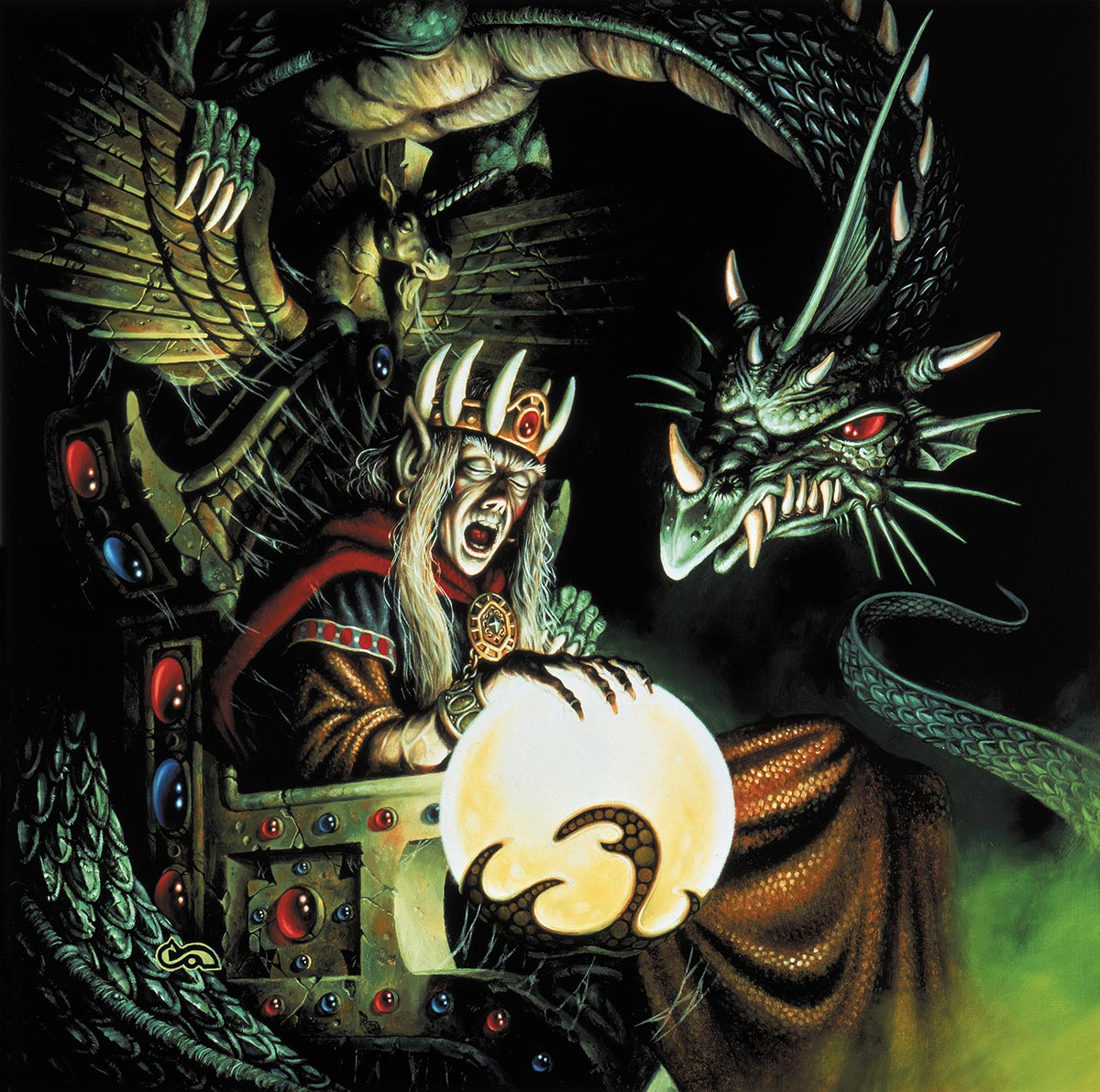
(1) https://www.burzum.org/eng/library/2013_interview_dungeon_synth.shtml
(2) https://www.burzum.org/eng/library/2005_interview_metalcrypt.shtml
